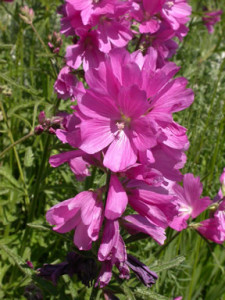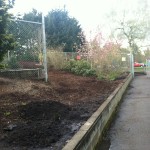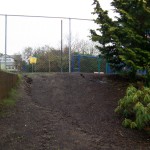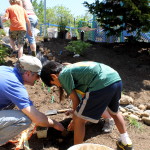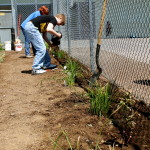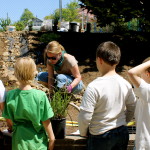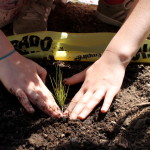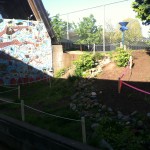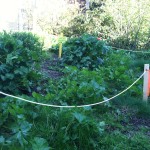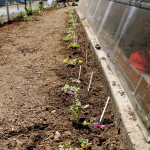Atkinson Elementary School’s Prairie Garden was created in 2011 by parents Sean Connolly and Patty Jordens, using a plan created by volunteer landscape designer Terrie Stubbs and support from the U.S. Fish and Wildlife Service’s Pacific Region.
The garden represents a habitat that is native to the northern Willamette Valley. Prairie ecosystems are very diverse in terms of the number of plant and species that occupy them, and very rare. Historically Native Americans regularly burned prairies to increase growth of food plants and to improve hunting.
Much of the original prairie across the United States–including the Willamette Valley, where less than 10% of its original prairie habitat now exists–has been lost when land was converted to agricultural use and development. At Atkinson Elementary, we celebrate diversity and uniqueness within our community, so adding a habitat that is also local, unique, and diverse fits our school’s philosophy.
Adding a New Site to the Atkinson Outdoor Learning Gardens Network
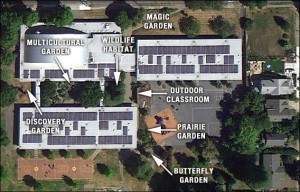 Prairie habitats are dominated by grasses and perennial plants that are adapted to shallow, dry soils and sunny, exposed conditions. Trees and shrubs grow in clumps or individually, depending on the level of moisture in the prairie or soil depth. Finding space for prairie plants was easy: a portion of the school’s southern campus was lightly planted and what was there wasn’t doing well. So we moved seven rhododendrons, a flowering dogwood, six Western Azaleas, and three Coyote bushes to the northwest corner of the school campus (the side near Franklin High’s baseball field and Dairy Queen). We did this to make room for the prairie plant species, and to give the plants we moved better growing conditions, since they were getting very hot and dried out in the summer.
Prairie habitats are dominated by grasses and perennial plants that are adapted to shallow, dry soils and sunny, exposed conditions. Trees and shrubs grow in clumps or individually, depending on the level of moisture in the prairie or soil depth. Finding space for prairie plants was easy: a portion of the school’s southern campus was lightly planted and what was there wasn’t doing well. So we moved seven rhododendrons, a flowering dogwood, six Western Azaleas, and three Coyote bushes to the northwest corner of the school campus (the side near Franklin High’s baseball field and Dairy Queen). We did this to make room for the prairie plant species, and to give the plants we moved better growing conditions, since they were getting very hot and dried out in the summer.
Using Our Prairie Garden as an Educational Tool
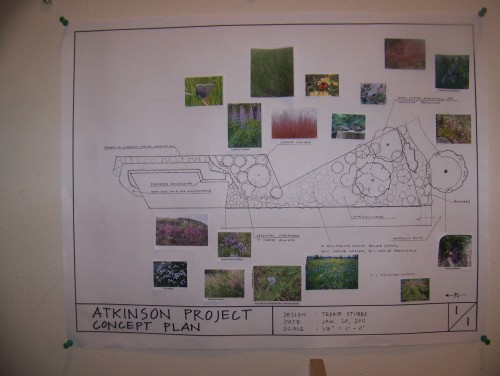 We want to educate children and adults within the Atkinson Elementary and Southeast Portland community about the function and value of gardens and ecosystems like prairies. We also want to show how native plants and pollinators are important. Ecosystems are like human communities: they function better when they are diverse. We hope our project will serve e as a demonstration garden to inform and inspire others about how to attract pollinators, plant native plants, and help people connect with nature.
We want to educate children and adults within the Atkinson Elementary and Southeast Portland community about the function and value of gardens and ecosystems like prairies. We also want to show how native plants and pollinators are important. Ecosystems are like human communities: they function better when they are diverse. We hope our project will serve e as a demonstration garden to inform and inspire others about how to attract pollinators, plant native plants, and help people connect with nature.
Why Our Prairie Garden Is Unique
There are several prairie demonstration sites throughout the Willamette Valley, but ours is the only Portland Public School project that currently has a plant species that is listed as Threatened (likely to become endangered in the forseeable future) under the federal Endangered Species Act! The listed plant we have is called Nelson’s Checkermallow (Sidalcea nelsoniana): it is a perennial herb in the mallow family that has tall, lavender to deep pink flowers. The flowers are borne in clusters that are usually spike‐like, elongate, and somewhat open, and flowering from mid‐May into September. It is native to the Willamette Valley, and grows in meadows in wet areas, and along streams.
For more information about our prairie garden, read this fact sheet.
Prairie Garden Site Before
First Planting, Spring 2011
After


